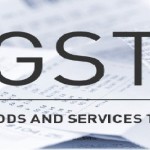Every working individual needs time off work for various reasons and is entitled to a minimum annual paid leave allowance. However, the employee can choose not to use all the leaves within a year, carry them forward, and encash them upon retirement or resignation. This facility is called leave encashment. Though straightforward, you must consider tax regulations under Section 10 (10AA) of the Income Tax Act.
Types of leaves
Kinds of leaves vary from one organization to another but usually include:
- Casual leaves for personal reasons
- Earned or privilege leave requested with prior notice
- Medical/sick leave
- Holiday leaves
- Maternity and paternity leaves that may not be eligible for encashment
- Sabbaticals for self-improvement and skill development
Understanding Section 10 (10AA) of the Income Tax Act
It’s essential to know the details of Section 10 (10AA) to understand the exemptions and limitations on the amount received as leave encashment.
- Exemption for Government Employees: Central and State Government employees enjoy full exemption on the leave encashment amount received at the time of retirement, which extends to encashment of earned and unutilized leave.
- Exemption for Non-Government Employees: Non-government employees are eligible for exemptions under certain conditions. According to Section 10 (10AA), non-government employees can claim exemptions on the least of the following:
- 10 months’ average salary preceding retirement or resignation
- Leave encashment received
- The maximum limit specified by the government (currently capped at Rs. 3,00,000) - Tax Liability for Excess Amount: If the leave encashment amount exceeds the permissible exemption limit, the surplus amount is subject to tax deduction at the applicable tax slab rate.
- Calculation of Average Salary: The average salary mentioned in Section 10 (10AA) includes basic salary, dearness allowance, and other fixed taxable allowances.
- Conditions for Exemption: To avail of the exemption, certain conditions must be met. The employee must have worked for at least 10 years, and the leave encashment should result from retirement, resignation, or superannuation.
- Commutation of Leave: This type of leave is granted to government employees, allowing them to convert a portion of their earned leave into cash. Commuted leave is entirely taxable.








